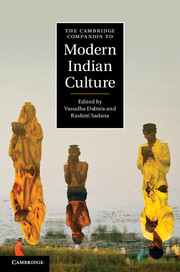3 - Food and agriculture
from Part I - Cultural contexts
Published online by Cambridge University Press: 28 May 2012
Summary
Introduction
In essence, food is a way of fulfilling a biological need – nutrition – within an ecologically and culturally defined context. At the same time, it is a way of expressing one's sense of self – individually and collectively – in relation to the past, present and future. Concerns about authenticity and belonging, taste and distinction, health and safety converge when food is at issue, as do embodied feelings like comfort, pleasure, craving and deprivation. This constellation of ideas and emotions makes food a particularly rich site for exploring the diverse ways in which Indians construct cultural identities at the cusp of imagined traditions and desired modernities. This chapter explores these processes of social formation – cultural being and becoming – by relating them to shifts in the modes of producing and consuming food. It attempts to analyse some of these shifts through a selective discussion of changing food practices in post-Independence India. It locates these changes in the context of the political economy of agriculture since the Green Revolution of the late 1960s and 1970s, a programme that radically reconfigured how and which foods are cultivated and consumed. The chapter goes on to delineate the widening circuits of food as a commodity form within the home and outside, spanned by the growth of processed foods and the practice of ‘eating out’. And it examines the multiple meanings that food conveys for different social groups by drawing upon three ethnographic vignettes from western India.
- Type
- Chapter
- Information
- The Cambridge Companion to Modern Indian Culture , pp. 49 - 66Publisher: Cambridge University PressPrint publication year: 2012
- 3
- Cited by



